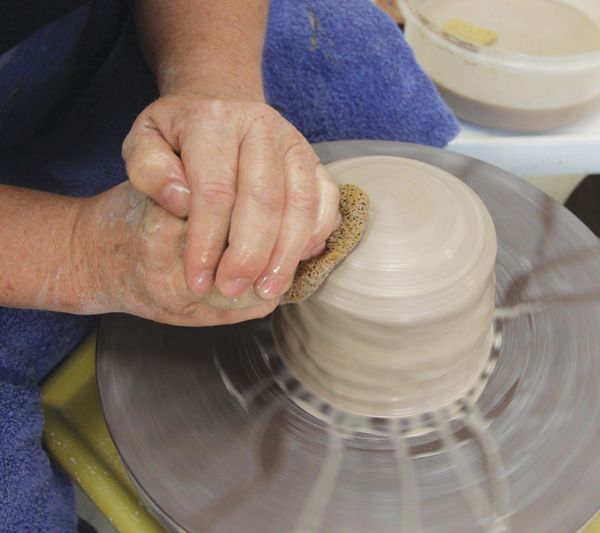What Are Three Important Steps Of The Technique Used By Martinez?
Introduce Martinez and His Technique
Maria Montoya Martinez was a Native American artist from San Ildefonso Pueblo, New Mexico. She is considered one of the most famous Native American potters for reviving the art of making traditional Pueblo pottery using ancient techniques.
Martinez developed a technique for producing traditional Southwest Native American pottery using black clay. Her innovative method involved painting native clay slips on the pottery before firing to produce the black coloration. This technique, known as the Martinez blackware technique, became synonymous with her name and brought her great renown.

Martinez’s blackware technique was notable because it revived the dying tradition of making black pottery among Pueblo artists. Her innovative method and high-quality pottery put San Ildefonso blackware on the map and helped preserve Pueblo cultural heritage.
Step 1: Assess the Situation
According to Luz M. Martinez in her LinkedIn post, the first step in her powerful strategy is to assess the situation. This involves taking stock of what is happening in the moment before jumping to any conclusions or taking action (Martinez, 2022).
Martinez recommends first assessing the patient’s vital signs and ensuring that they are medically stable. This initial assessment provides crucial information about the patient’s overall health status and allows the provider to address any immediate medical needs (Martinez, 2022).
Assessing the situation before acting is important because it prevents the provider from making assumptions or developing biases. By gathering objective data first, the provider can gain a clearer understanding of the patient’s condition without preconceived notions. This allows them to develop an appropriate plan based on facts rather than emotions or hunches (Chegg, 2023).
Overall, Martinez emphasizes assessing vital signs and medical stability first in order to obtain the critical information needed to properly understand and care for the patient.
Step 2: Stabilize the Patient
According to Martinez, the key actions for stabilizing the patient are to establish trust, demonstrate empathy, and validate emotions (Martinez). Building rapport through non-judgmental listening and understanding allows the patient to feel heard and understood. This process aims to alleviate acute distress, provide reassurance, and lay the groundwork for further treatment and lifestyle changes.
Stabilization is a critical step because patients in crisis often feel alone, scared, and out of control. By first establishing a sense of care, compassion, and collaboration, Martinez empowers patients to open up and engage in solutions. This stabilizing foundation enables the subsequent process of uncovering core issues and developing an effective treatment plan. Rather than rushing to treat surface-level symptoms, Martinez insists that meaningful change starts with forging a trusting human connection.
Step 3: Address the Underlying Issue
According to the legal case Martinez v. Berryhill (https://casetext.com/case/martinez-v-berryhill-2), Martinez aims to address the underlying root cause of the patient’s condition or symptom through his technique. Often there are deeper issues contributing to surface-level problems, so Martinez tries to uncover and resolve those core issues.
Martinez recommends taking a holistic view of the patient and their circumstances to get to the heart of the matter. This may involve asking probing questions, conducting additional testing, or consulting with other specialists. The goal is to pinpoint any hidden factors like chronic stress, trauma, nutritional deficiencies, sedentary lifestyle, etc. that could be exacerbating the condition.
Once the underlying problem is identified, Martinez develops a customized treatment plan to tackle it directly. This may include counseling, dietary changes, physical therapy, medication adjustment, or other interventions tailored to the patient’s needs. Addressing the root cause, rather than just the outward symptoms, allows for more complete and lasting healing according to Martinez’s technique.
Step 4: Develop a Long-Term Plan
A key part of Martinez’s technique is developing a comprehensive long-term plan for the patient once their condition has been initially stabilized. According to the Waterfront Marina Plan, Martinez emphasizes the importance of not just addressing the immediate issues, but also laying out a longer-term strategy to manage the patient’s health over time (Waterfront Marina, 2023).
This long-term planning is vital for several reasons. First, it helps ensure the underlying issues are fully addressed, rather than just the acute symptoms. Second, it empowers the patient with the knowledge and tools to better self-manage their condition going forward. And third, it allows for periodic check-ins and adjustments to the plan as circumstances evolve. By taking a long-view, Martinez enables more holistic and proactive care (Evidence review for step 4 treatment, 2019).
In summary, Martinez sees long-term planning as essential because it leads to better patient education, engagement, and outcomes over time.
Step 5: Educate the Patient
According to Martinez (Diagnostic Testing Algorithms: their impact to patient care, 2022), an essential part of his technique is to thoroughly educate the patient about their condition and treatment plan. This education includes explaining the diagnosis, helping the patient understand why certain tests or medications are prescribed, providing instructions for at-home care, setting expectations for the recovery process, and equipping the patient with resources and contacts in case they have questions in the future.
Providing this education serves multiple important purposes. First, it empowers patients to take an active role in their health and care, which improves outcomes. Knowledgeable patients are better equipped to comply with treatment plans, report concerning symptoms, and make healthy lifestyle adjustments. Second, patient education builds rapport and trust between provider and patient. When patients feel informed and heard, they are more satisfied with their care experience. Third, education can help minimize risks and complications if patients understand warning signs and know when to seek medical attention. For chronic conditions, ongoing patient education enables better self-management. By thoroughly educating throughout the technique, Martinez enables patients to achieve the best possible recovery and equip themselves for long-term health.
Step 6: Follow Up
Martinez recommends ongoing follow up after the initial session to check in on progress and provide additional support. In the follow up sessions, Martinez has patients report on homework completion, successes, obstacles, and any additional thoughts or realizations since the last session. He uses motivational interviewing techniques to encourage continued practice and commitment to values-based behavior change.
Follow up is an essential component of Martinez’s technique for several reasons:
- It provides accountability and motivation to keep practicing the skills learned in therapy.
- It allows Martinez to monitor and reinforce progress, and adjust the treatment plan if needed.
- Ongoing coaching and support improves long-term outcomes, as behavior change takes time and practice.
- The therapeutic relationship is strengthened through consistent engagement over time.
As Martinez states in The Initial Session: Setting Up the ACT Matrix For the First Time, follow up sessions allow him to ask clarifying questions and gather feedback to refine the treatment approach. Maintaining open communication and providing ongoing guidance is key to successful application of his methodology.
Step 7: Adjust the Plan
An important part of Martinez’s technique is the ability to adjust treatment plans as needed. As the patient’s condition evolves or new information comes to light, Martinez recommends revisiting the original plan to determine if any changes need to be made (The Implementation Process: Stages, Steps and Activities, 2013). This flexibility is a key part of his approach.
Martinez understands that no plan is perfect from the outset. By monitoring progress and collaborating with the patient, he can identify areas that need modification. For example, if certain lifestyle changes prove too difficult for the patient, Martinez will work with them to set more realistic goals. Or if new symptoms arise, he will alter the treatment plan to address them. According to Martinez, “A static plan helps no one. We must adapt as the situation changes” (The Implementation Process: Stages, Steps and Activities, 2013).
This willingness to adjust and tailor treatment plans to individual patients is why Martinez’s technique leads to successful long-term outcomes. He knows there is no one-size-fits-all approach in healthcare. By regularly re-evaluating and modifying plans as needed, Martinez ensures patients get the care that is right for them.
Step 8: Support Lifestyle Changes
Martinez emphasizes the importance of long-term lifestyle changes for successful weight loss and maintenance. He promotes increased physical activity, healthier eating habits, stress management, and accountability through support groups or coaching (Source: https://www.wikihow.com/Overcome-Obesity). These changes help address underlying causes for obesity beyond just diet and exercise.
To support these changes, Martinez provides patients with customized meal and workout plans, referrals to dietitians and fitness trainers, and access to support groups. He also utilizes mobile apps, wearable devices, and check-ins to track progress and encourage adherence (Source: https://www.gastrojournal.org/article/S0016-5085(22)01026-5/abstract). He may recommend medications like semaglutide to reduce appetite and control cravings in the initial weight loss phase (Source: https://www.mdpi.com/2227-9032/11/3/433).
By providing ongoing support and resources for lifestyle changes, Martinez helps patients sustain the obesity treatment in the long run.
The Importance of Martinez’s Technique
Martinez’s technique is considered an important development in critical care medicine as it provides a systematic approach for stabilizing and treating critically ill patients (https://www.ncbi.nlm.nih.gov/pmc/articles/PMC9024665/). The key steps allow providers to quickly assess the situation, address immediate threats to life, treat the underlying condition, and develop a long-term care plan. This technique has been credited with improving patient outcomes in emergency and ICU settings.
However, some limitations have been noted. The heavy reliance on technology like MALDI-TOF mass spectrometry for identifying pathogens can be problematic if the equipment is not properly maintained or calibrated (https://www.infectiologyjournal.com/articles/benefits-and-limitations-of-malditof-mass-spectrometry-for-the-identification-of-microorganisms.html). There is also a need for more evidence through randomized controlled trials to validate the effectiveness of Martinez’s approach compared to standard protocols.
Additionally, the technical nature of the steps makes it difficult to implement broadly across all care settings. Nonetheless, Martinez’s method represents an important advancement in the field of critical care medicine.



